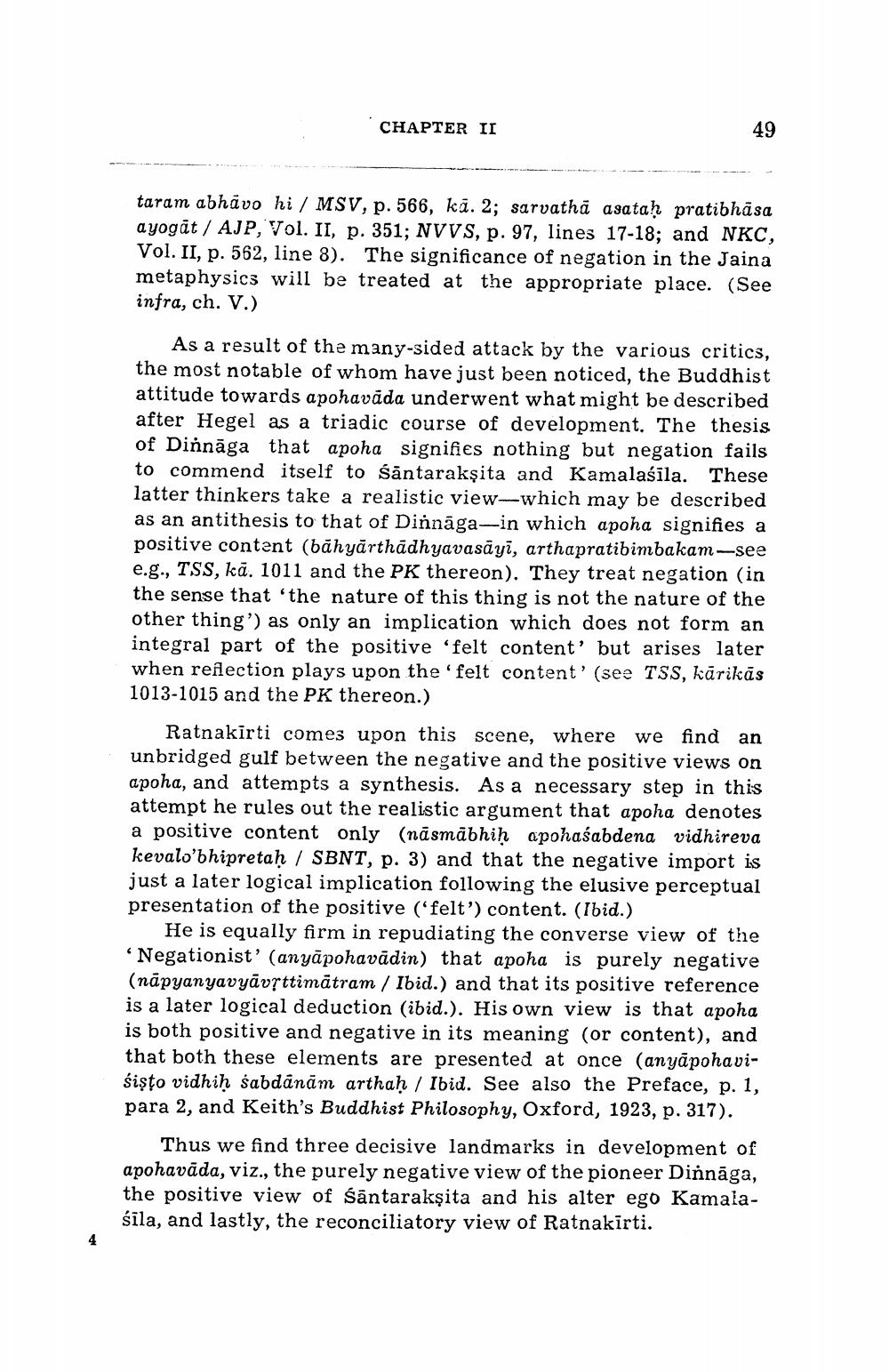________________
CHAPTER II
49
taram abhāvo hi / MSV. p. 566, kā. 2: sarvathā asatah pratibhasa ayogāt / AJP, Vol. II, p. 351; NVVS, p. 97, lines 17-18; and NKC, Vol. II, p. 562, line 8). The significance of negation in the Jaina metaphysics will be treated at the appropriate place. (See infra, ch. V.)
As a result of the many-sided attack by the various critics, the most notable of whom have just been noticed, the Buddhist attitude towards apohavāda underwent what might be described after Hegel as a triadic course of development. The thesis of Dinnāga that apoha signifies nothing but negation fails to commend itself to śāntarakṣita and Kamalaśīla. These latter thinkers take a realistic view-which may be described as an antithesis to that of Dinnāga-in which apoha signifies a positive content (bāhyārthādhyavasāyī, arthapratibimbakam-see e.g., TSS, kā. 1011 and the PK thereon). They treat negation (in the sense that 'the nature of this thing is not the nature of the other thing') as only an implication which does not form an integral part of the positive 'felt content' but arises later when reflection plays upon the 'felt content' (see TSS, kārikās 1013-1015 and the PK thereon.)
Ratnakirti come upon this scene, where we find an unbridged gulf between the negative and the positive views on apoha, and attempts a synthesis. As a necessary step in this attempt he rules out the realistic argument that apoha denotes a positive content only (nāsmabhiḥ apohaśabdena vidhireva kevalo'bhipretaḥ / SBNT, p. 3) and that the negative import is just a later logical implication following the elusive perceptual presentation of the positive ('felt') content. (Ibid.)
He is equally firm in repudiating the converse view of the "Negationist' (anyāpohavādin) that apoha is purely negative (näpyanyavyāvsttimātram / Ibid.) and that its positive reference is a later logical deduction (ibid.). His own view is that apoha is both positive and negative in its meaning (or content), and that both these elements are presented at once (anyāpohaviśişto vidhiḥ śabdânām arthaḥ / Ibid. See also the Preface, p. 1, para 2, and Keith's Buddhist Philosophy, Oxford, 1923, p. 317).
Thus we find three decisive landmarks in development of apohavāda, viz., the purely negative view of the pioneer Dinnāga, the positive view of śāntarakṣita and his alter ego Kamalaśīla, and lastly, the reconciliatory view of Ratnakīrti.




